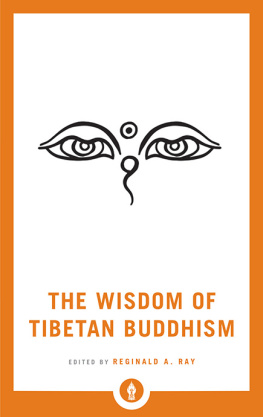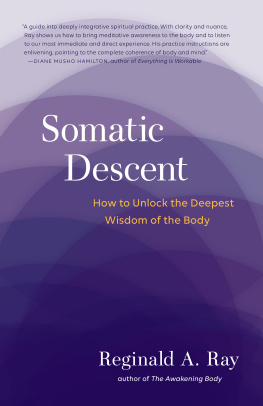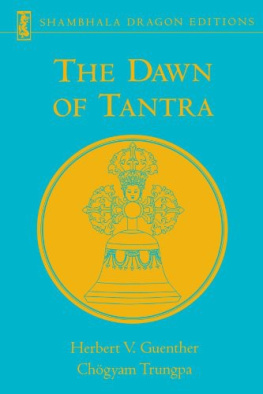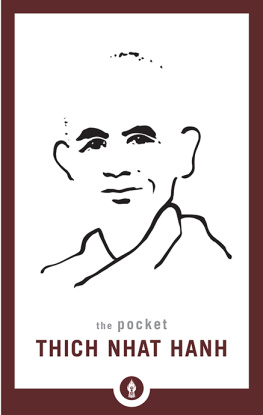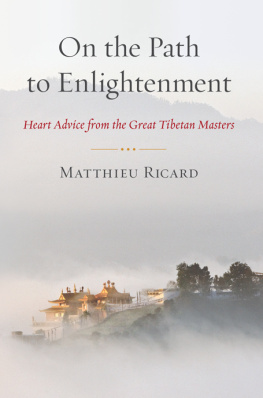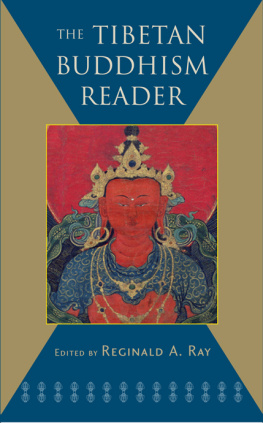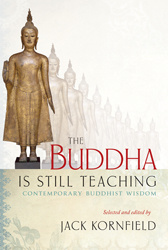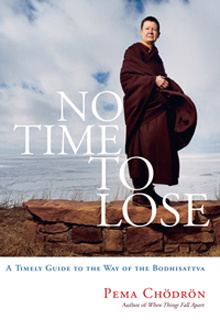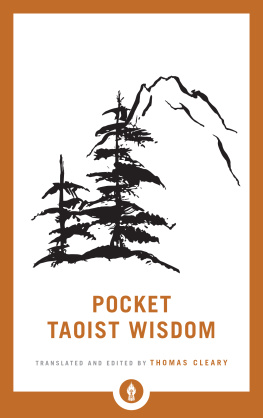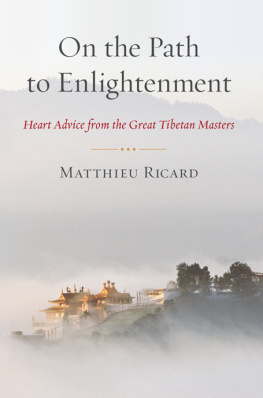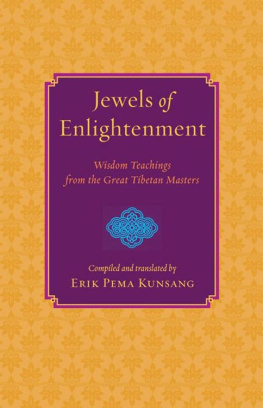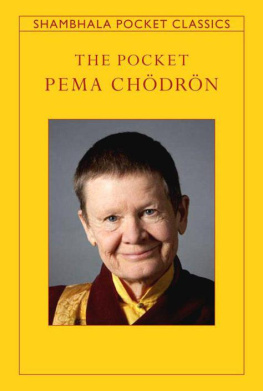ABOUT THE BOOK
Here is a portable collection of inspiring readings from the revered masters of Tibetan Buddhism. The Tibetan Buddhism Reader includes quotations from major lineage figures from the past such as Padmasambhava, Atisha, Sakya Pandita, Marpa, Milarepa, and Tsongkhapa. Also featured are the writings of masters from contemporary times including the Dalai Lama, Dudjom Rinpoche, Khyentse Rinpoche, Sakya Tridzin, Chgyam Trungpa, and others. Topics include cultivating compassion, letting go of ego, learning to become more alert and present in our lives, and developing a clear perception of our own true nature.
REGINALD A. RAY, PhD, is a faculty member at Naropa University and is President and Spiritual Director of the Dharma Ocean Foundation, which is dedicated to the practice, study, and preservation of the teachings of Chgyam Trungpa. He is also the author of many books, including Indestructible Truth and In the Presence of Masters.
Sign up to learn more about our books and receive special offers from Shambhala Publications.

Or visit us online to sign up at shambhala.com/eshambhala.
THE WISDOM OF TIBETAN BUDDHISM

EDITED BY
Reginald A. Ray

SHAMBHALA Boulder 2017
SHAMBHALA PUBLICATIONS, INC.
4720 Walnut Street
Boulder, Colorado 80301
www.shambhala.com
2004 by Reginald A. Ray
This book was previously published as
The Pocket Tibetan Buddhism Reader.
Cover art by Robert Spellman
Cover design by Jim Zaccaria
All rights reserved. No part of this book may be reproduced in any form or by any means, electronic or mechanical, including photocopying, recording, or by any information storage and retrieval system, without permission in writing from the publisher.
LIBRARY OF CONGRESS CATALOGING-IN-PUBLICATION DATA:
Names: Ray, Reginald A., editor.
Title: The wisdom of Tibetan Buddhism / edited by Reginald A. Ray.
Other titles: Pocket Tibetan Buddhism reader
Description: Boulder: Shambhala, 2017. | Series: Shambhala pocket library | Originally published under title: Pocket Tibetan Buddhism reader. | Includes bibliographical references.
Identifiers: LCCN 2017009891 | ISBN 9781611804751 (paperback) | eISBN 9780834825079
Subjects: LCSH: Spiritual lifeBuddhismQuotations, maxims, etc. | BuddhismQuotations, maxims, etc. | BuddhismTibet Region. | BISAC: RELIGION / Buddhism / Tibetan. | RELIGION / Buddhism / General (see also PHILOSOPHY / Buddhist). | SELF HELP / Spiritual.
Classification: LCC BQ 7610 .P63 2017 | DDC 294.30951/5dc23
LC record available at https://lccn.loc.gov/2017009891
I would like to acknowledge some of the many people and organizations who have helped bring this collection to completion. Thanks to the Goldfarb Foundation and to Naropa University for grants underwriting some of the expenses of manuscript preparation. Special appreciation goes to Diana J. Mukpo for permission to quote from the works of Chgyam Trungpa Rinpoche. I want to express my gratitude to Matthieu Ricard for allowing me to include teachings of His Holiness Khyentse Rinpoche found in Journey to Enlightenment. Thanks to Marcia and Erik Schmidt for permission to include instructions of Tulku Ugyen Rinpoche. Thanks also to Sakyong Mipham Rinpoche and to his editor, Emily Hilburn, for the unpublished teachings included here. Thanks also to the following lamas for use of their unpublished teachings, and to their students who acted as advisors, intermediaries, and editors: to Thrangu Rinpoche and his student Clark Johnson; to Ponlop Rinpoche and his student Cindy Shelton; to Dzigar Kongtrul and his student Vern Mizner; to the Venerable Khandro Rinpoche and her student Karl Gross; to Ringu Tulku and his student Tharpa Lowry. And thanks to the other lamas quoted in these pages, and to their editors and publishers for giving permission for these quotations. My gratitude goes to Elizabeth Callahan for permission to use her translation of a song by Milarepa. I want to express my special appreciation to Beth Marvel for her extensive and computer-savvy editorial assistance in this project, and for carrying through the sensitive task of obtaining the necessary permissions. I offer my sincere thanks to my Shambhala editor Ben Gleason for his steady and intelligent assistance throughout the course of this project. Thanks also to Amelie Bracker for help with the biographies of the authors. And much gratitude goes to my wife Lee who helped me through each stage of manuscript preparation and for much advice on what to include, what to exclude, and how best to display the extraordinary wisdom of the teachers cited herein.
Tibetan Buddhism is ultimately a method of spiritual edification, transformation, and awakening. When we contemplate the dharma in Tibet, it is easy to feel overwhelmed and lost in its richesits philosophy and ethics; its descriptions of suffering, thirst, and karma; its vision of compassion and community; its colorful art and iconography; its dramatic and complex history. But we must always keep in mind that the entire Buddhist enterprise in Tibet, though sometimes seeming to roam far afield, always comes back and down to a single point: the human journey to spiritual fulfillment. For Tibetan Buddhism, spiritual realization is not just theoretically the only attainment worthy of our human state but is, more practically, entirely within our reach right now.
For any tradition to advance such a goal, at least in the modern world, would seem to invite not only skepticism but cynicism and ridicule. And yet Tibetan Buddhism, even as it modernizes, continues to insist that its methods, if taken seriously and followed, will lead to a transformation that gives the lie to beliefs in original sin. For, as it is held, all people, simply by virtue of being sentient beings, already have within them the summum bonum, the utter perfection of buddha-nature, and it requires only some trust and a little exertion to remove the coverings that obscure it.
This volume contains various sayings of Tibetan lamas, both present and past. All of these revolve around the central theme of Tibetan tradition: how the Buddhist methodologies can lead us out from our presently confused and uncaring state to a mode of awareness that is boundless and free and governed by love for others. These selections focus on our individual, personal experience: what the path feels like, how meditation unfolds in our lives, the particular problems and obstacles that arise for practitioners, the way to be genuinely helpful to others, and how the vividness and clarity of realization begin to dawn within our awareness.
The collection is divided into seven chapters that follow the structure of Tibetan Buddhism itself. The first looks at our human situation, marked by suffering, conditioned by karma, and yetif understood and directly addressedreplete with opportunity for change. Chapter 2 addresses the spiritual path itself, including its nature, characteristics, and qualities. The third chapter provides a view of the abundant lore surrounding the practice of meditation, the core methodology of Tibetan Buddhism. Teachings on compassion as it arises naturally out of the practice of meditation are outlined in the fourth chapter. Chapters 5 and 6 articulate teachings on emptiness and the buddha-nature, respectively, while the final chapter provides some glimpses of spiritual realization itself.
In this book I have selected passages that, I hope, will be useful in a practical way. They describe the journey up the great mountain of enlightenment: how it is sensed, perceived, and experiencedwhat the trail is like in the dark, lower forests; among the fragrant grasses and brilliant wildflowers of the upper meadows; and, above the tree line, in the desolate but spectacular proximity of the peak itself.
Next page
